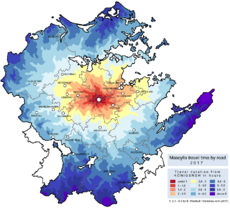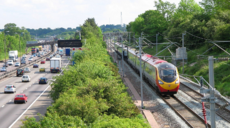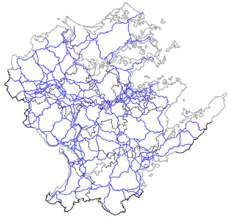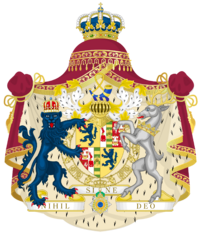Transport in Mascylla
This article is incomplete because it is pending further input from participants, or it is a work-in-progress by one author. Please comment on this article's talk page to share your input, comments and questions. Note: To contribute to this article, you may need to seek help from the author(s) of this page. |
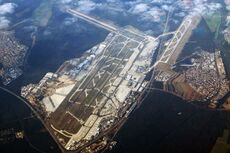
Transportation in Mascylla relies on one of the densest transportation and infrastructure networks of the world with 129 km or roadway and 5.8 km of rail lines per 100 km2, and is needed by Mascylla, a densely populated, economically developed country in central Erdara. Rail, road, air and water are all suffisticated and widely developed means of transportation in Mascylla.
All activities and affairs of transportation is overseen by the Ministry of Infrastructure of the Realm of the Mascyllary government.
One of the world's first large-scale highway systems, the Autobahn is a nation-wide system of highways and roads. The country's most important waterways are the rivers Blaugold, Röhrn and Warne, as well as a canal system connecting the three rivers and Lake Sigismund respectively; the largest mairitime port is that of Flussmund at the mouth of the Blaugold. Königsreh–Albert Polschnitz Airport is the largest aiport in Mascylla and a large international hub of air travel and transport in Erdara. Air travel in general is rarely used for inland flights, mainly due to its suffisticated road and rail network, but nevertheless competes with Mascylla's Gekrönte Bahn, the state-owned railway operator. High- and medium-speed trains such as the ILE (InterLandExpress) connect urban areas, with passengers and cargo able to move at 370 km/h between cities. Most Mascyllary cities have a connection to rapid transit capabilities, most notably the Königsreh U-Bahn, and public transport is provided by state.
Railways
The network of the railways is one of the most suffisticated and oldest of its kind in the world. The backbone is made up of five major lines or corridors radiating away from Königsreh, the Nordlandpfad, Südlandpfad, Zentralpfad, Sigismundpfad and Warnenpfad. These are served by and supported with numerous regional and local lines as well as dense networks in urban agglomerations. The HGB network, largely operated with the ILE train family and responsible for high speed train travel in the country, is operated separatly from its slower counterpart and specifically constructed to apply to Erdaran Union standards to allow for international network cooperations such as the HGZ Erdara, whom is a major factor of national railway travel. Generally the high-speed network is extensive and provides renowned service.
The first railroad line with passenger carriage, the Hubertsburg-Merzenich-Landeisenbahn, assumed operation in 1846, and in 1855, the first line was opened connecting two major cities (Augusthal und Weidenau-Bahn). In its wake, hundreds of railroad companies were founded that slowly merged into six conglomerates by the begin of the 20th century, though they would be quickly nationalised and centralized by authorities in 1898. In 1950, these companies, having been temporarly unified as Reichsbahn (RB), were separated again and its rolling stock, passenger carrying and freight subsidies divided among its successors, while the maintenance and providing of the infrastructure remained government-controlled to avoid the rise of a network monopoly. Thus, the six original companies were retained and the network expanded by a third between 1951 and 1975. In Mascylla, the railroad infrastructure, including all tracks, stations, maintenance workshops and signalling, is in the possession of the nationalised and non-profit orientated Nationalnetzwerk. Passenger travel is made available by private companies and firms, who comply with regulations posed by the Ministry of Transport of the Realm in order to accomplish running by franchising principle. Freight and cargo travel is divided among state-owned and private transportation companies, though they do not receive the same restrictions and laws to respect as its counterparts in public transport. Often companies rent or lend rolling stock items from public providers, as they often lack the financial abilities to maintain a fleet on their own.
The network in Mascylla encompasses 34,726 kilometres of tracks which use the standard gauge of 1,435 mm. 10,242 kilometres of which are electrified and 28,591 kilometres are double or multi-track. The maximum velocity of ILE trains on InterCity routes is 240 km/h (149 mph), while on certain segments of the HGZ Erdara in Mascylla a velocity of up to 350 km/h (217 mph) is permitted.
